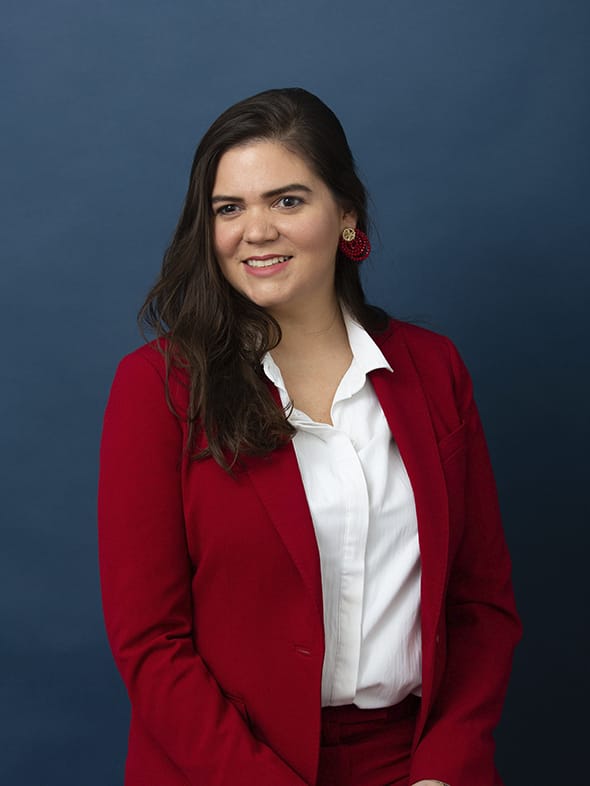These Latinas Are Changing The World With Their Groundbreaking Inventions In Science, Technology, And Engineering
Women are under-represented in the tech sector. Not only that, but they’re underpaid, often passed for promotions and faced with everyday sexism. It’s no wonder women are more likely to leave the industry within a year compared to their male counterparts. But there’s hope. Last week, the MIT Technology Review published a list of the leading Latin American innovators of 2019, and we wanted to highlight the women, who have pushed through in a male-dominated industry and are creating solutions for issues like climate change, terminal illnesses, and other threats.
In a field that requires women to work alongside men who don’t believe women have the intelligence and inclination to work in STEM (Science, Technology, Engineering and Math), these Latina innovators are proving otherwise.
Renee Wittemyer, director of program strategy and investment at Pivotal Ventures —Melinda Gates’ investment and incubation company— says that women, and particularly women of color, “are being systemically left behind.” And, she adds, “these stats are moving at a glacial pace.” According to Wittemeyer, African American women and Hispanic women represent 3% and 1% of tech workers respectively.
There is an extensive underrepresentation of women in STEM fields.
Women make up only 24 percent of the STEM workforce. To make matters worse, only 3 percent of Latina women are working in STEM fields. So these Latina innovators are worth celebrating.
These scientists, biologists and engineers are making a social impact by solving many of the world’s most complex questions and threatening issues—from climate change to terminal illnesses to social problems.
Here are five Latina innovators shaking up the STEM (Science, Technology, Engineering and Math) sphere and using technology to create a greater impact for the world:
Lucía Gallardo

technologyreview.es
Lucía Gallardo is the brain behind “Emerge,” a start-up that aims to solve social problems with emerging technologies, such as blockchain, Internet of things (IoT) and artificial intelligence (AI). “Through her company, Gallardo tries to bring these tools to people who work on social impact projects, especially in impoverished countries such as her native Honduras. One of Emerge’s main sources of support is women and marginalized communities, who are driven by both technology and advice,” MIT Technology Review writes.
María Alexandra Tamayo

technologyreview.es
This Colombian innovator, is purifying water in a country that has the second-most water resources but where only 8% of households have access to drinking water. This way, the biomedical engineer hopes to avoid diseases and death caused by water.
“This is how NanoPro was born, a device ‘capable of eliminating fungi, viruses and bacteria from water without affecting its taste, smell and color,’ the engineer explains. “The filter can be applied in both rural and urban populations, since it is incorporated both in faucets and in thermoses for those areas whose supply network does not reach homes.” With her invention, Tamayo hopes to democratize the access to drinkable water.
Marcela Torres

technologyreview.es
Marcela Torres wants to help refugees and immigrants in Mexico through “Holacode,” a software she developed to provide immigrants with access to employment and better integrate themselves into society. “Marcela Torres realized that in Mexico there were not enough people with the qualifications needed for the software developer positions that were open in the country, so she decided to use technology to solve the problem,” the MIT magazine wrote. “This is how ‘Holacode’ was born, a start-up that offers software development courses for the migrant community in Mexico.” Holacode offers coding and software courses for migrants in Mexico. The courses lasts five months, and with this start-up, Torres hopes that technology education can become more democratic and accessible. “The start-up allows these jobs to be filled by especially vulnerable people such as migrants.”
María Isabel Amorín

technologyreview.es
Amorín, 28-year-old Guatemalan chemist discovered an innovative way to clean sewage. On top of emissions and the excessive rate at which we are consuming resources, another great impact that global industrial activities have on the planet, is water pollution. In short, textile industries use a lot of chemical dyes for the production of clothing, which not only results in massive water waste but these chemicals can pollute rivers and other bodies of water.
The Guatemalan chemist, Maria Isabel Amorin, “synthesized a polymer from shrimp shells that’s capable of retaining the dyes used in the textile industry.” According to the MIT Technology Review, “The filter works by recirculating and retaining the dye used to dye clothes. This project is particularly focused on artisanal textile production, since the technologies available to treat the waters are very expensive. Now, the young chemist is in the process of patenting her ecological method of filtration and hopes to scale production.”
Mariel Pérez Carrillo

technologyreview.es
This Mexican biochemical engineer and entrepreneur, helps farmers increase their crop production through Innus Technologies. Carillo recalled, “I went to the countryside to learn from the farmers and I realized that they don’t know how their crop is. They also don’t know what state their soil is in.” She invented Enviro, a device that identifies soil conditions and climate in real time and, from them, offers recommendations to improve crop yields.
Thanks to its sensors, Enviro can measure temperature, humidity, conductivity, pH and salinity. The device can help farmers reduce crop losses. Pérez affirms that Enviro also reduces the need of agricultural supplies, “which reduces the contamination of soil and aquifers caused by to excessive use of agricultural chemicals.”




